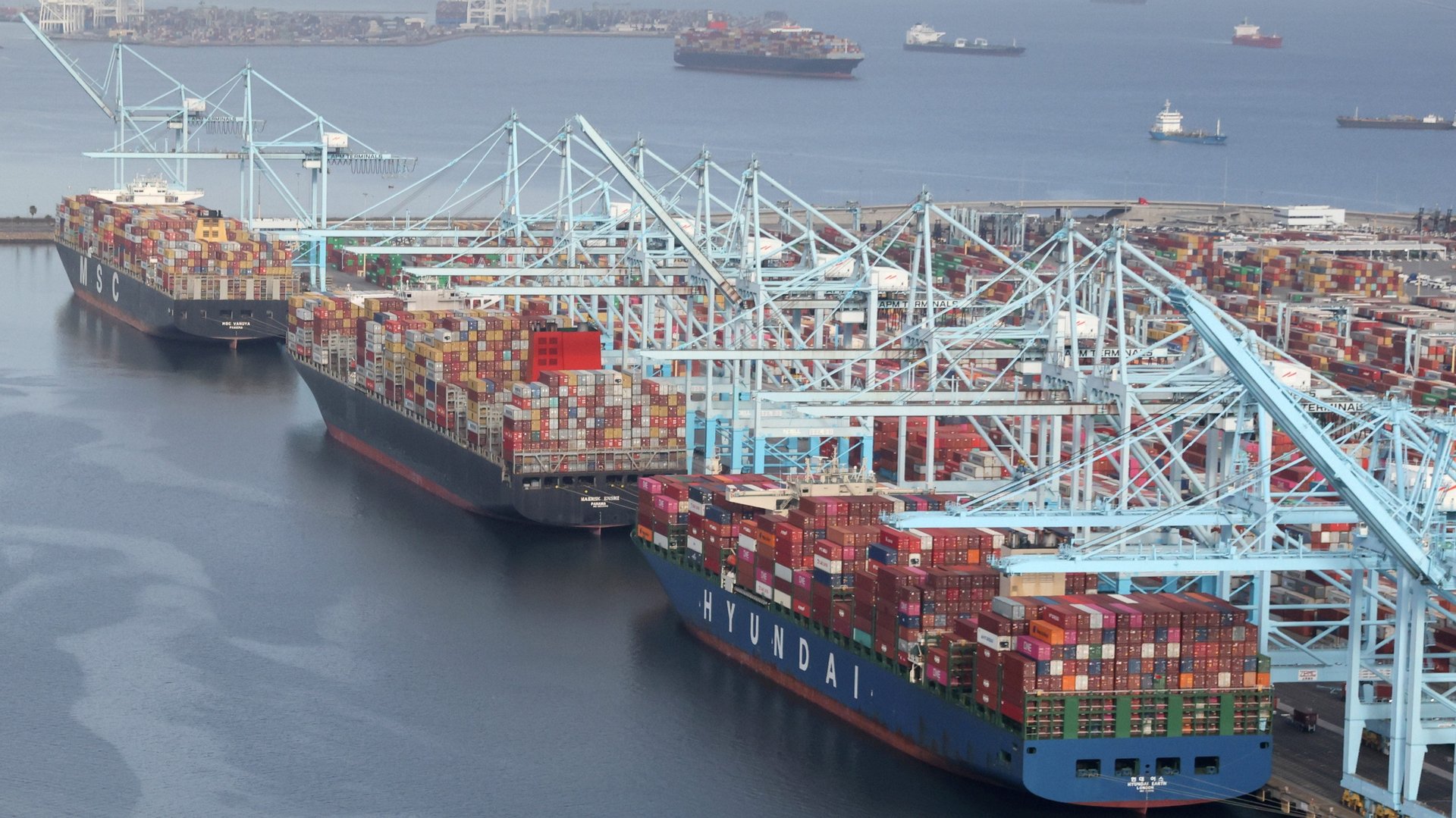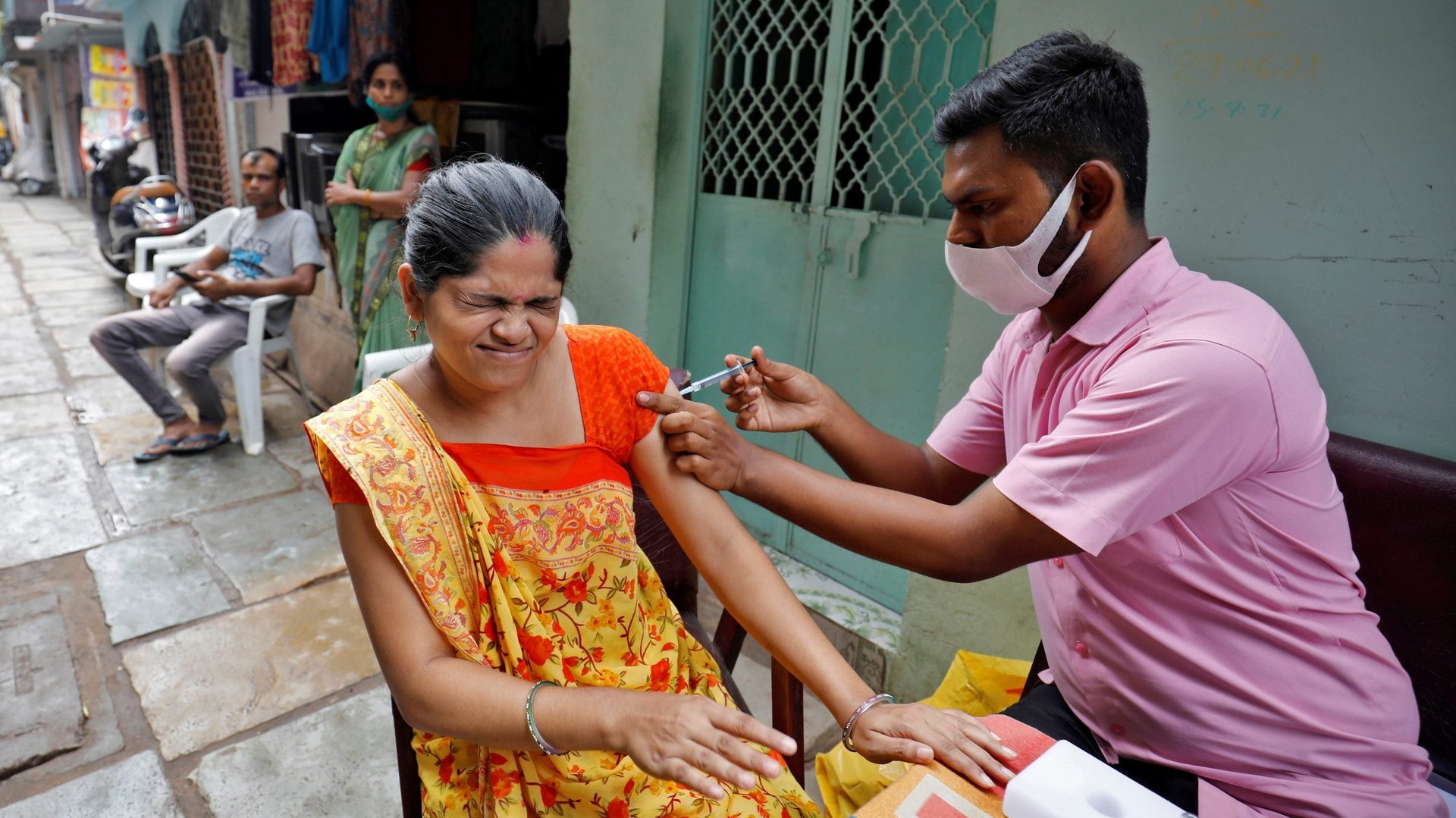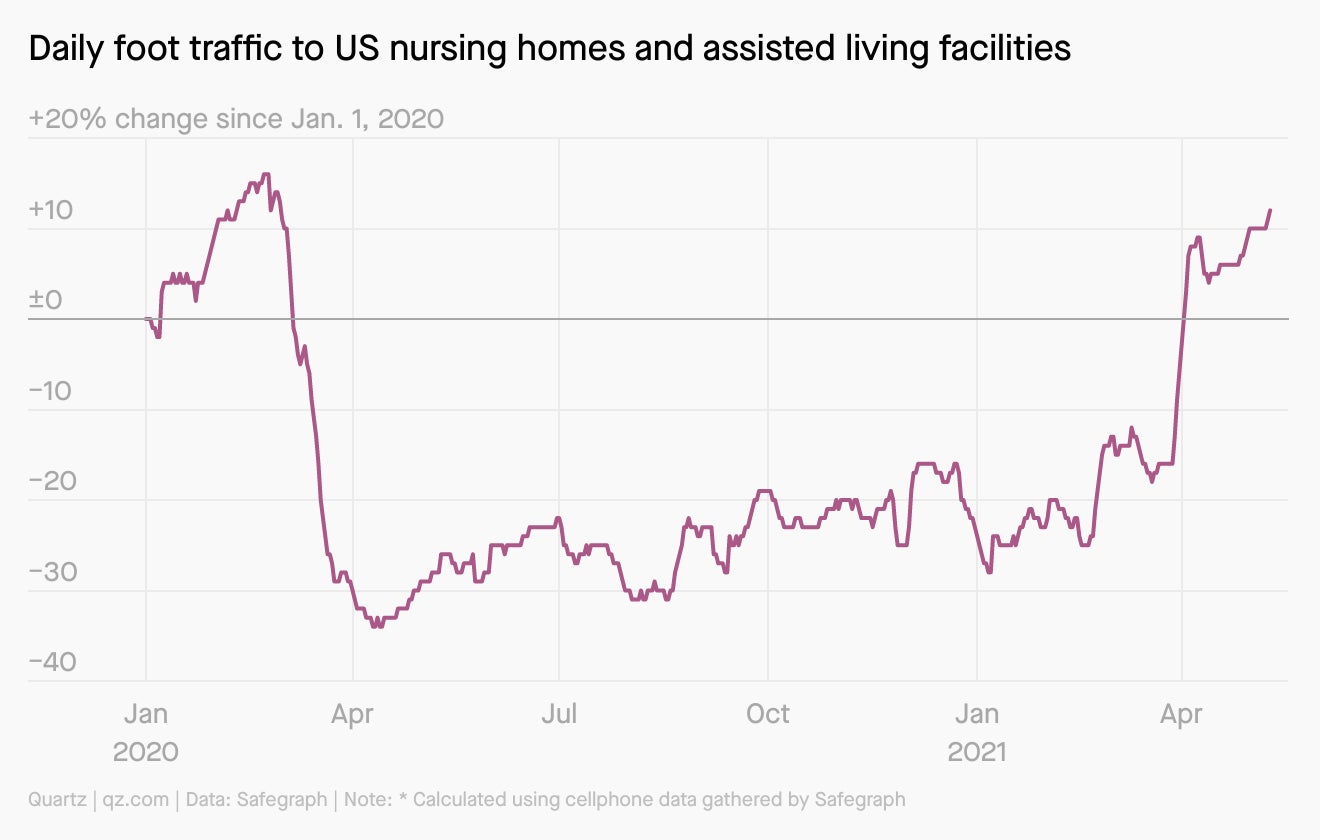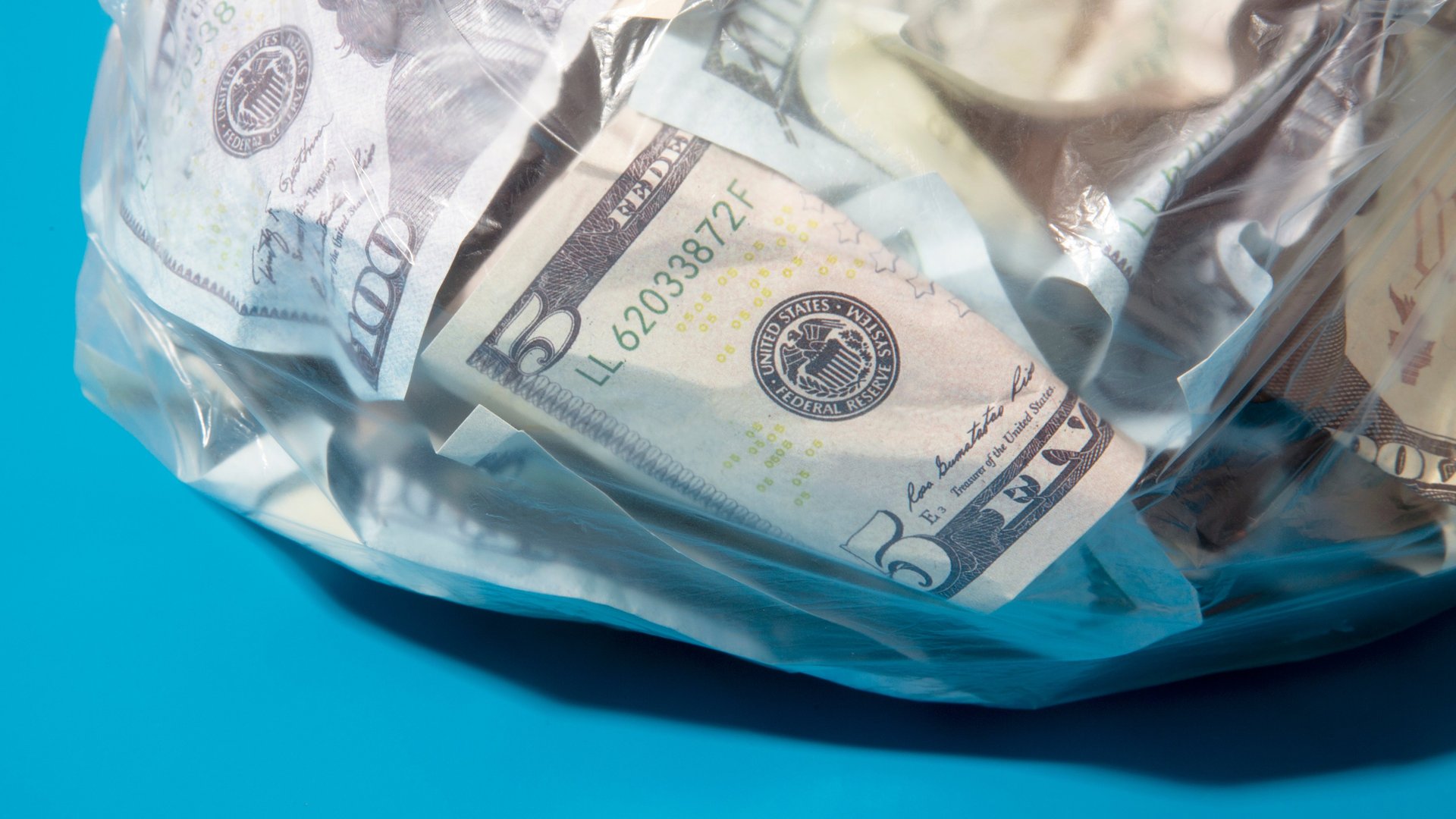Please come home for Christmas
Hi Quartz readers,


Hi Quartz readers,
If a retailer’s container isn’t already on the water, they’ve probably missed Christmas.
Reliability, a measure of on-time arrivals, is at a record low of 33.6%—meaning two-thirds of goods shipped into the US are arriving late—according to Sea-Intelligence, a maritime research firm. Freightos, a Hong Kong-based online shipping marketplace, has found that delays for finished goods are averaging 72 days. The Institute for Supply Management found that shipping times for parts have stretched to an average of 92 days, the longest since they started keeping records in 1987. That means even goods assembled in the US may be held up as they wait for components from China.
“It’s a constant struggle,” says Mike Shaughnessy, senior vice president of operations and supply chains at Balsam Hill, a California-based retailer of artificial trees. Before the pandemic, Balsam Hill could expect their trees to ship on the day they scheduled them to ship. Now it can take an extra five weeks.
Once goods do arrive in the US, they face more roadblocks. Courier companies like FedEx have struggled with the holiday rush, moving up ground transport cut-off dates (pdf) as a result. Last Christmas, FedEx delivered over a million packages late. Since then, supply chain issues have deepened, and holiday sales are expected to be about 10% higher this year.
How companies deal with delays will depend on consumers, says Nathan Strang, a senior manager of ocean operations at Flexport, a San Francisco-based freight forwarder. If consumers accept that some things will arrive late, then the companies can better take the fallout in stride. If they decide that a late arrival has ruined the holidays, the anger is likely to be passed on to the retailer, and back up the supply chain to the forwarders, trucking companies, warehouses, and ports.
“It’s going to be a rough holiday, and I think it’s going to be a holiday unlike anything we’ve seen before,” Matt Garfield, a managing director for a retail consultancy, said in an interview with Retail Dive. “We’re going to see a lot of bare shelves.” —Aurora Almendral
✦ What arrives on time, every time? Exclusive emails for Quartz members. Check out The Forecast, The Company, How To, and the Weekend Brief by trying membership today—take 40% off with the code QZEMAIL40.
Shots misfired

India’s vaccination program can’t catch a break. The country now has enough vaccine supply for its year-end immunization goal—a big change from May, when several states had to shut down vaccination centers and manufacturers halted exports—but now syringe makers are struggling. Hindustan Syringes & Medical Devices, for example, is one of India’s largest syringe makers, but also supplies them for global vaccination programs like those undertaken by Unicef.
Talking points
💼 Why aren’t more Americans working by now? A large swath of workers who left the job market amid the pandemic don’t seem in a hurry to come back.
💸 Moderna is very focused on profits. The New York Times found that the company has shipped a greater share of its vaccine doses to wealthy countries than any other manufacturer.
👩⚕️ America’s healthcare workers are fed up. The US is down more than half a million healthcare workers since February 2020—400,000 of them in nursing and residential care facilities.
🌯 US restaurants face an ingredient shortage. Three-quarters of restaurants have been forced to change menu items—from cheese to chicken wings—due to supply chain issues.
🇮🇳 India is… ready for tourists? International travelers will be allowed in as of mid-November, in time for the country’s festival and wedding season.
💉 There are still barriers to vaccination. For US Latinos, obstacles include requests for government ID, long waits, lack of childcare, and minimal information in Spanish.
👵 How Covid-19 isolated the elderly. US lawmakers are scrutinizing a March 2020 ban on non-essential staff in nursing homes that cut off 1.3 million people.

How Covax failed
“Covax probably overestimated the amount of vaccines they were going to get and the speed at which they were going to get them. And they basically told that story to the countries.” —Mauricio Cárdenas, a member of the WHO’s Independent Panel for Pandemic Preparedness and Response
Conceived at the start of the pandemic, Covax pursued lofty goals, promising fair access to Covid-19 vaccines for every country, and free vaccines for the poorest of them. But the first 18 months have not gone as hoped.
As richer countries roll out booster shots, 98% of people in low-income countries remain unvaccinated. Covax, described as “naively ambitious” by one expert, has contributed just 5% of all vaccines administered globally and recently announced it would miss its target for 2021. Here’s what went wrong.
Cashing out

The pandemic accelerated many trends: working from home, ordering groceries online, and wearing Crocs among them. It also brought us closer to life without cash.
All over the world, people are using digital payments more than ever—but there’s also a record amount of cash in circulation. Why? To learn more, listen to this week’s episode of the Quartz Obsession podcast, where executive editor Kira Bindrim and finance reporter John Detrixhe talk about what we really lose in a world without 💵.
Elsewhere on Quartz
- Financial FOMO: Everything you need to know about DeFi
- Reality check: Tesla won’t make cars in India anytime soon
- OK mom: Facebook is asking teens to use Instagram responsibly
- Virtual insanity: Inside Africa’s biggest cryptocurrency scams
- Damn, Daniel: Can Squid Game fashion outlast Halloween?
Our best wishes for a healthy day. Get in touch with us at [email protected], and live your best Quartz life by downloading our iOS app and becoming a member. Today’s newsletter was brought to you by Aurora Almendral, Manavi Kapur, Rosa Furneaux, Olivia Goldhill, John Detrixhe, and Kira Bindrim.